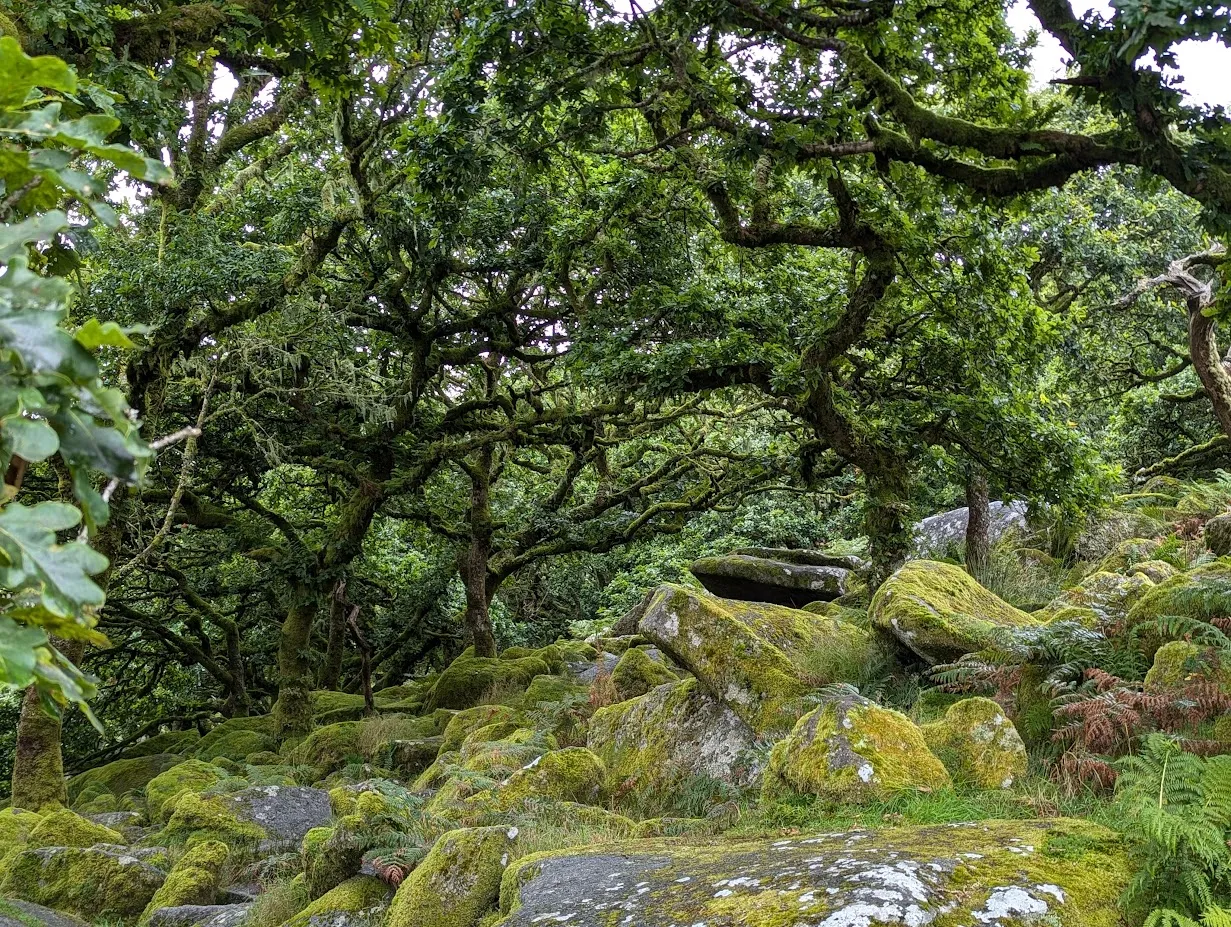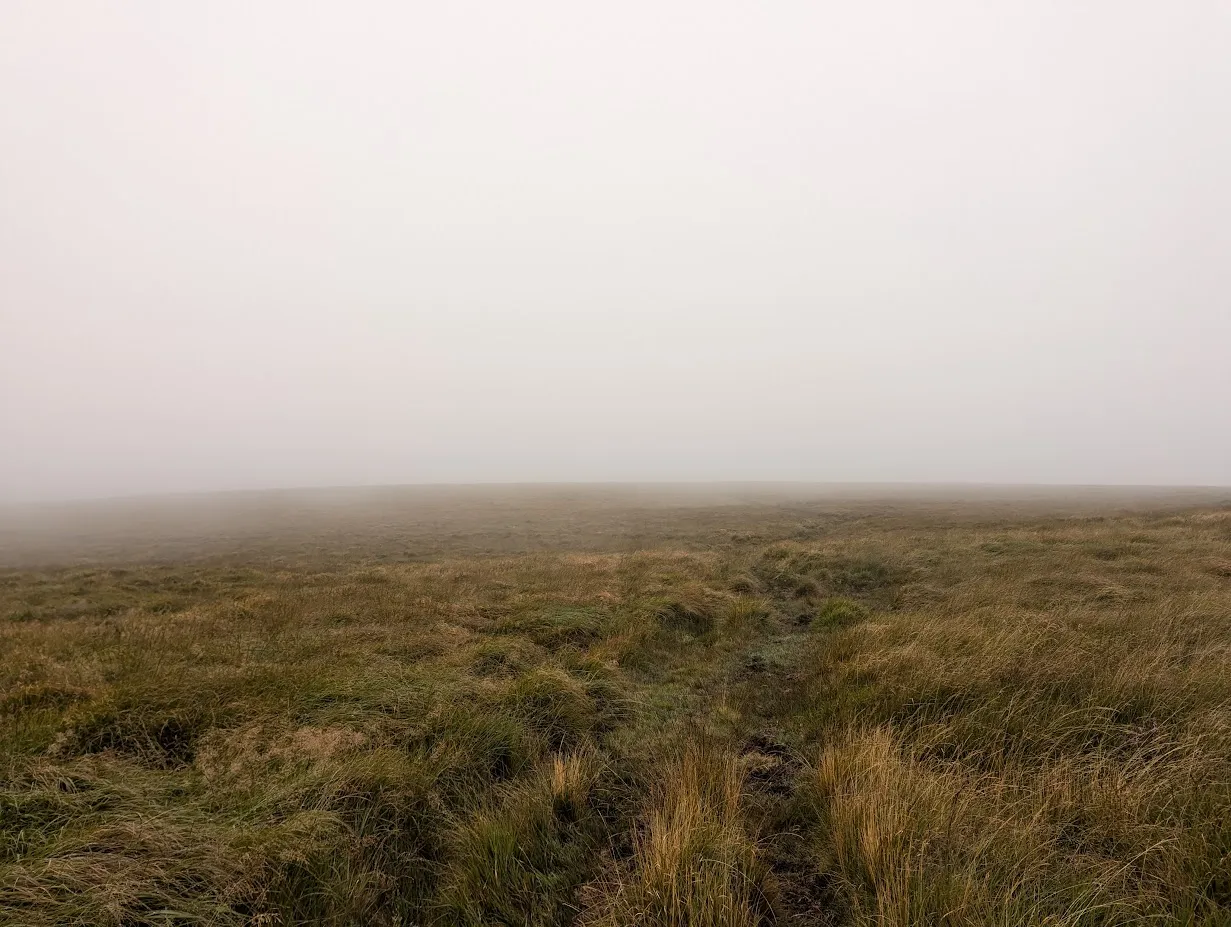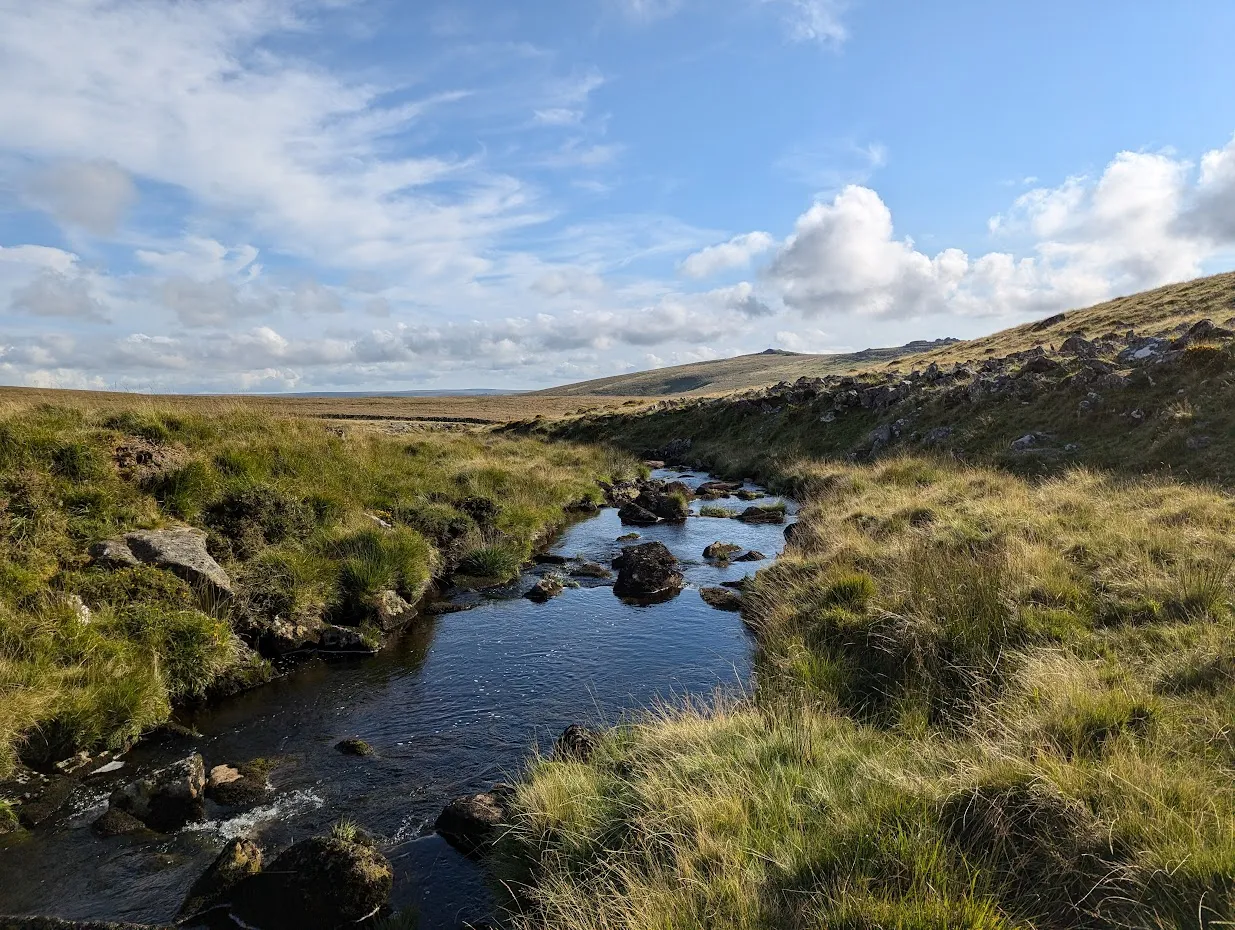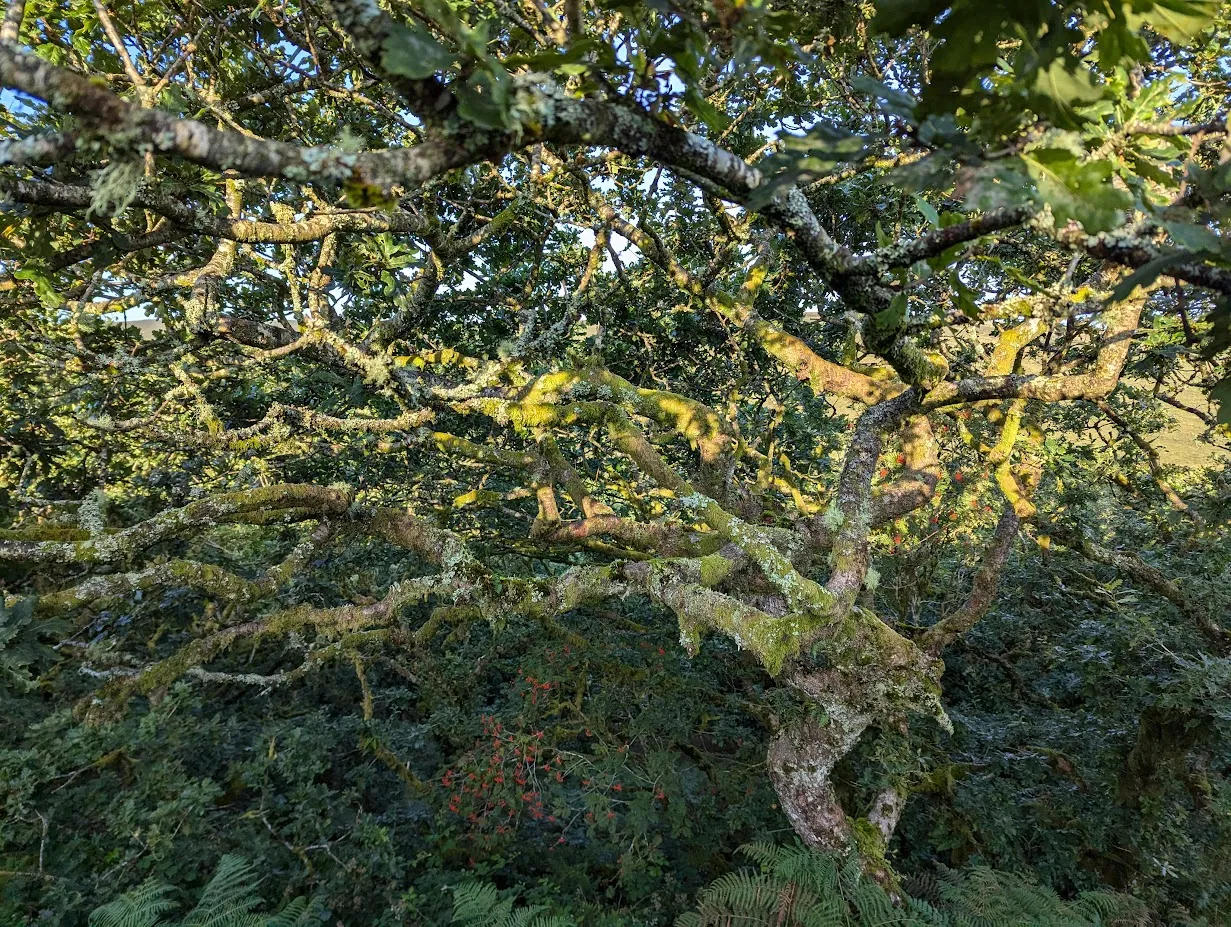The ancient temperate rainforest of Wistman's Wood on Dartmoor is an unassuming presence on the map, a narrow sliver of trees just north of Two Bridges. Indeed, the forest itself is tiny, really barely more than a copse that lies sunken along the base of the West Dart Valley. Nevertheless, it's an enchanting place - the wizened oaks and moss covered boulders grant an immense and ancient depth to the wood, drawing the viewer's gaze deeper into the trees.
 Wistman's Wood
Wistman's Wood
The path to Wistman's Wood begins as a well kept gravel track leading up the hill, though it quickly becomes grassy and boulder strewn as it enters Dartmoor proper. A few hundred metres along the trail the first twisted oaks begin to appear, curled over by the constant wind and clinging to the windswept grass determinedly. The wood itself is situated a little further up the valley, a dense cluster of gnarled, moss-covered trunks reaching up out of a luminous green boulder field. The trees are a fractal-like explosion of plant life. Wistman's Wood is a rare example of temperate rainforest, and is duly populated with swathes of epiphytes (plants that grow on other plants). Each branch is laden with moss, fronds of rare horse hair lichen and even entire ferns, all swaying gently in unison. The trees are at least four hundred years old, though potentially much older, a fact that felt abundantly clear all over the ancient rainforest.
I visited the wood on a drizzly August afternoon. The moor alternated between thick mist and light rain as I hiked up from the road, low clouds occasionally covering the top of Beardown Tor to the west. The rain fell steadily as I walked and beneath the edge of the straggly canopy there was a muffled sound of raindrops falling onto leaves. The place seemed to glow with life and energy, bright green with an undercurrent of birdsong drifting out from among the stones. Passage directly through the wood is forbidden to protect its fragile ecology, but there is a trail along its northern edge which often dips to the treeline, affording a view deep into the forest's heart. The wood emanated a deep, calm quiet as I wandered by. It was a little saddening to see evidence of the woods' decline - the occasional lonely oak still clung further up the valley's sides, remnants of what must have once been a much larger expanse of trees - though the care and attention the wood now receives presents a hope that it will expand once more in future.
 Mist descends
Mist descends
Before long the trees to my left thinned and I was once again walking on open moor. I aimed to spend the night on the moor, and so I began to climb the hill to Longaford Tor, leaving the oaks of Wistman's Wood huddled below. As I walked deeper into the knee high grass a crisp silence settled as the drone of the road fell away. Dartmoor is the sort of place that finds your presence thoroughly inconsequential - it is not necessarily inhospitable, simply vast and ancient, thoroughly unbothered by a lone hiker perched on its grassy slopes. I fell into a comfortable stride, picking out lightly trodden trails through the dense grass. Cresting the hilltop though, an ominous low cloud presented itself. I was gradually plunged into dense mist as it swept in, reducing visibility to almost nil. I ended up veering down the hill in the fog and came upon the River Dart, so I decided to cross and continue walking along the west bank. Soon after, I crossed the low stone wall into the camping area, making good progress up the river as the cloud gradually cleared.
 The view from camp
The view from camp
The western edge of the Dart is lined with glacier-deposited rocks and boulders and inhabited by a flock of inquisitive sheep. The grass is nibbled short and made for much easier going than the dew-drenched variety to the east, and I quickly hiked northwards following the curve of the river. It is one of the quietest places I've experienced for a long while - when the wind drops there is absolutely no sound, with the many background hums and drones of the modern world entirely absent. After a little exploring I was ready to set up camp, and sound a low, sheltered spot by the river in which to spend the night. The river burbled quietly as I pitched up and the sun started to break through the drizzle, allowing for some much needed drying of clothes. Later that evening I wandered up the hill for a better view of the various tors which encircled my camp - the sun was beginning to set and the moor was drenched in golden light. Just as I started to head down the hill a trio of Dartmoor ponies appeared, who eyed me with caution as I walked back to my tent for the night.
 The woods at sunrise
The woods at sunrise
In the morning the moor was blanketed with cool mist, which gradually lifted as I breakfasted and packed up my gear. My walk back was rather quicker, and thankfully unencumbered by rogue clouds. The sun broke over Higher White Tor just as I set off for the road, sending a line of gold creeping down the hillside. I passed Wistman's Wood again as I walked, now dappled with morning sun and lattices of shadow and savoured the last few glimpses of ancient oaks and mossy boulders. I met no one on my early morning hike home and though hints of civilisation dotted the last few kilometres of the trail, the site of the car park and the road still felt a little incongruous as I emerged from the wilderness and set off for home.